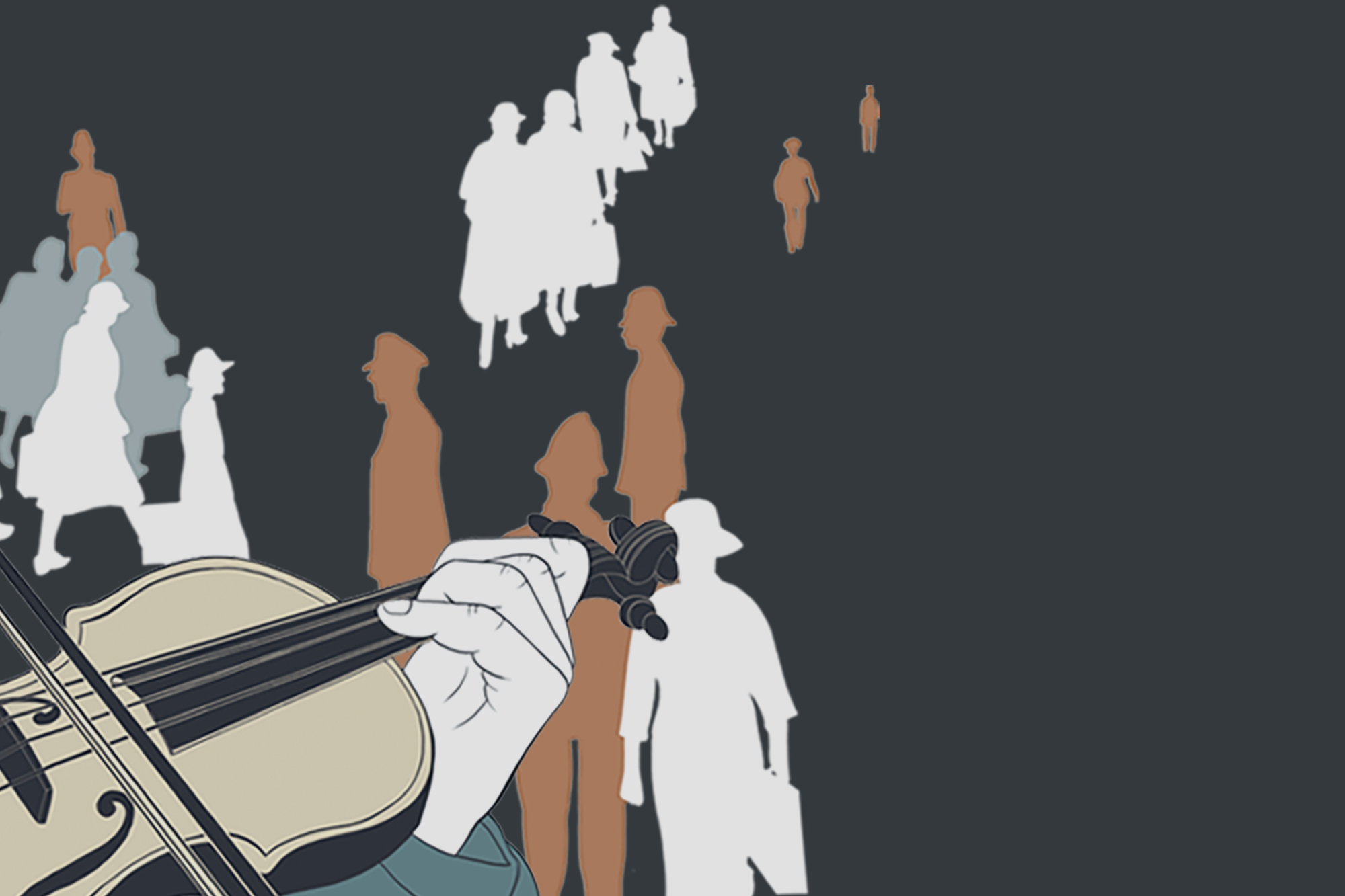Explore the story of émigré musicians from Nazi Europe in Britain in the RCM Museum's upcoming exhibition
Tuesday 18 October 2022
The Royal College of Music Museum’s latest exhibition, Music, Migration & Mobility – The Story of Émigré Musicians from Nazi-Europe in Britain, explores the lives and legacies of musicians who fled the Nazi regime and the ravages of war.
Many of the most influential figures in post-war British musical life were émigré musicians, who were forced to leave their homeland as a direct result of the rise and impact of the Nazi regime in Germany. From Jewish musicians who were removed from their posts, to political opponents escaping retribution, Britain offered a creative home where they could thrive and go on to a play a role in enriching its cultural life.
Among them were the composer and former RCM professor Joseph Horovitz (best-known for his 70+ television and film scores, including that for Rumpole of the Baily); cellist and surviving member of the Women’s Orchestra of Auschwitz Anita Lasker-Wallfisch (who was a founding member of the English Chamber Orchestra), composer Mátyás Seiber (who wrote music for many prominent artists including Dennis Brain and Peter Pears who was regarded as one of the finest teachers of composition in the country); the artist Milein Cosman (whose work is on display at the RCM and the Wigmore Hall); the legendary artist, musician and broadcaster Gerard Hoffnung; the broadcaster and writer Hans Keller and many others who would play a key role in the development of now major British institutions including Glyndebourne, the Royal Opera, the BBC and the RCM itself and whose work resonates today through film, TV and art.
From annotated scores and costumes to recordings and concert programmes, alongside photography and personal items, Music, Migration & Mobility invites visitors to delve into the lives and experiences of the musicians who settled in Britain as a result of the Nazi regime. First hand reflections are woven throughout the exhibition, introducing visitors to the musicians’ migratory journeys, motivations, experiences and their impact on wider British culture.
The poignant story of cellist Anita Lasker-Wallfisch, a survivor of the concentration camps of Auschwitz and Bergen Belsen, is told alongside her cello case, which dates to her early years in Britain. Materials, including original programmes, drawings and a tuba owned by German artist, musician and broadcaster Gerard Hoffnung, who was brought to England as a boy, offer an insight into his humorous productions. Other objects featured in these sections include composer Mátyás Seiber’s film scores, original story boards and an Ivor Novello Award for the popular song By the Fountains of Rome written in 1956.
The exhibition begins with an exploration of why musicians fled and delves into their long and harrowing journeys, enhanced with a series of interactive maps, personal testimonies and possessions. It goes on to look at the challenges that faced them once in Britain and the impact of internment. Locations, such as Mooragh Camp on the Isle of Man, saw many musicians grouped together, allowing a creative atmosphere to flourish. Makeshift posters and programmes created within the camps are displayed alongside photos, letters and poetry giving insights into how creative networks developed, even during the most challenging times.
The journey through Music, Migration & Mobility continues as visitors are transported to the now iconic Glyndebourne. Glyndebourne's early success was thanks to émigrés, such as Fritz Busch and Carl Ebert, who promoted the employment of those who fled. Newspaper clippings illustrate the debates taking place in post-war Britain. Set-design sketches, costumes and backstage photos invite visitors into the world of the émigré musicians and their work. The exhibition continues, examining the Amadeus Quartet and their cultural contribution. Memorabilia from their first concert at Wigmore Hall, portraits by the artist Milein Cosman and letters all demonstrate their standing.
The final sections explore émigré musicians as founders, educators and cultural figures. Objects including instruments, books, photographs and programmes give insights into the lives of those who remained in Britain after the war.
Royal College of Music researcher and exhibition curator Norbert Meyn said: 'In telling the stories of just some of the musicians who settled in Britain during the mid-20th century, we hope to explore not just individual experiences, but also the far-reaching impact of migration on culture at large. Music moves when people move and just as traditions, skills, ideas and indeed objects get passed on from one generation to another, so does the impact of musicians’ migration during this period.'
The Music, Migration & Mobility exhibition is one of many outputs of the Arts and Humanities Research Council (AHRC) funded Music, Migration and Mobility research project at the Royal College of Music. The project, led by Norbert Meyn, brings together an international team of musicians and researchers, for one of the biggest musicological research projects at the Royal College of Music to date.
The Music, Migration & Mobility exhibition opens at the Royal College of Music Museum on 17 January 2023. The RCM Museum is open Tuesday–Friday, 10.15am-5.45pm and Saturday–Sunday, 11am-6pm. Entry to the exhibition is free and can be booked online.
To find out more about the Music, Migration and Mobility research project, visit the project webpages or online resources.








